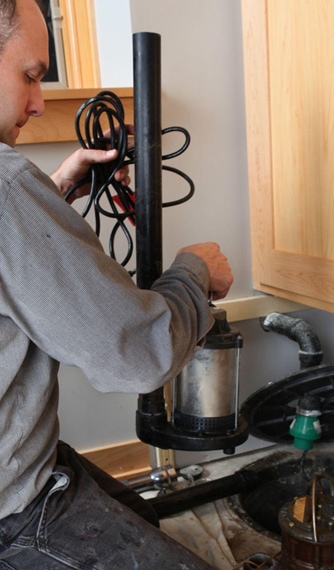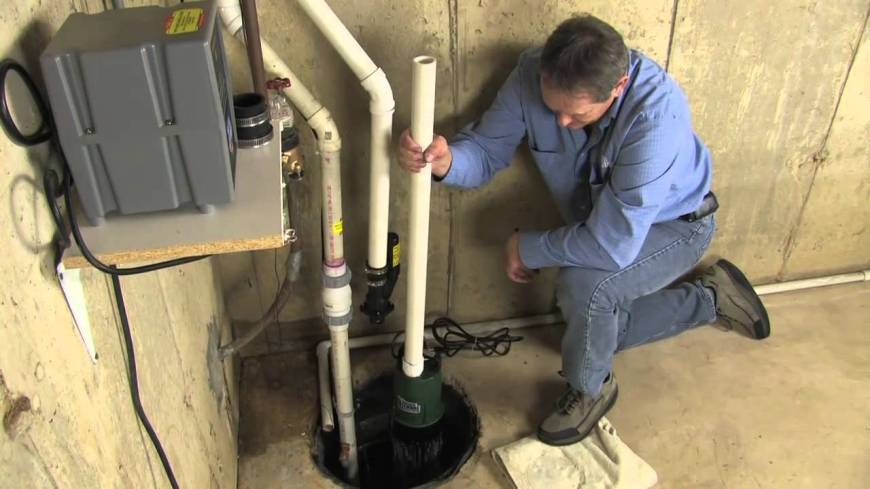Just about everyone has got his or her own opinion about Steps to Cleaning Your Sump Pump Properly.

Sump pumps are essential components in several homes, particularly in locations susceptible to flooding or excessive wetness. They help stop water damage by effectively getting rid of excess water from basements or crawl spaces. Nevertheless, like any other device, sump pumps call for routine maintenance to ensure they function effectively when required one of the most. Cleansing your sump pump is a crucial part of its maintenance, and comprehending how to do it correctly can save you from expensive fixings and prospective disasters.
Intro
Preserving a clean sump pump is important for its proper performance and long life. Overlooking this crucial job can bring about blockages, malfunctions, and eventually, water damage to your residential or commercial property. Consequently, discovering just how to cleanse a sump pump is crucial for homeowners who rely upon these tools to maintain their cellars dry and safeguarded.
Indications of a Dirty Sump Pump
Recognizing when your sump pump needs cleansing is vital for stopping prospective breakdowns. Some common indications that show an unclean sump pump include strange noises throughout operation, reduced water circulation, and visible particles in the pit. If you see any of these symptoms, it's essential to clean your sump pump promptly to avoid any type of additional concerns.
Preparing for Cleansing
Prior to you begin cleaning your sump pump, it's vital to take some security preventative measures. Start by shutting down the power to the pump to avoid any type of electrical crashes. In addition, use appropriate safety gear, such as gloves and safety glasses, to safeguard yourself from dirt, particles, and potential pathogens.
Comprehending the Sump Pump
Prior to diving right into the cleansing process, it's important to have a basic understanding of just how a sump pump functions. Usually installed in a pit or container below the cellar flooring, a sump pump contains several vital elements, including a pump, a float button, and a discharge pipeline. When water collects in the pit, the float button triggers the pump, which after that pumps the water out with the discharge pipe, away from the building's foundation.
Detailed Overview to Cleaning a Sump Pump
Shutting Off the Power
Begin by disconnecting the power supply to the sump pump to prevent any type of accidents while cleaning.
Looking For Correct Functioning
Prior to re-installing the pump, carry out a quick test to make sure that the float button turns on the pump correctly. Put some water into the sump pit and observe the pump's procedure. If every little thing is working appropriately, you can reassemble the pump and reconnect the power supply.
Eliminating Debris and Dust
Use a pail or an inside story to eliminate any kind of noticeable particles, dirt, or sediment from the sump pit. Dispose of the particles correctly to stop it from clogging the pump or the discharge pipe.
Cleaning up the Pump and Drift Switch Over
As soon as the pit is clear of particles, very carefully eliminate the pump from the pit. Examine the pump and the float switch for any signs of damages or wear. Make use of a soft brush or fabric to clean up the surface areas and eliminate any collected gunk.
Flushing the System
After cleansing the pump and float switch, purge the sump pit with clean water to get rid of any kind of staying dirt or sediment. This will assist make certain that the pump runs efficiently and effectively.
Upkeep Tips to Keep Your Sump Pump Clean
Along with routine cleansing, there are several maintenance ideas you can follow to maintain your sump pump in optimal condition:
Final thought
Cleaning your sump pump is a crucial element of its maintenance and ensures that it operates successfully when you need it the most. By complying with the steps laid out in this overview and integrating normal maintenance right into your regimen, you can prolong the lifespan of your sump pump and secure your home from water damage.
6 STEPS ON HOW TO CLEAN A SUMP PUMP PROPERLY
UNDERSTANDING SUMP PUMPS
Your sump pump plays a crucial role in protecting your home by managing and removing excess water. It primarily functions as a “shield”, guarding your basement against the damaging effects of water accumulation. The pump is housed in a sump pit in the lowest part of your basement, and its job is to pump out any water that collects there.
During heavy rainfalls or when snow melts rapidly, water can infiltrate your basement, posing potential risks like flooding, structural damage, and harmful mold growth. Here, the sump pump springs into action, pumping out the intruding water and directing it away from your home.
SAFETY FIRST
Before cleaning, remember to prioritize safety. Disconnect the sump pump from the power source to prevent any accidental electric shocks. Also, wear sturdy gloves to protect your hands from any sharp or dirty components within the pump.
REMOVE THE SUMP PUMP
After ensuring your safety, the next step is to remove the sump pump from its pit. Doing this might require careful maneuvering as you don’t want to damage any pump components. Once removed, clean the sump pit to remove any accumulated debris or sludge.
INSPECT THE PUMP
Inspect the pump for any visible signs of wear or damage. Check the power cord, float switch, and impeller housing. If any components look worn out or damaged, consider replacing them to ensure optimal performance.
CLEAN THE PUMP
Thoroughly clean the pump with warm, soapy water. Make sure to rid it of any dirt, gravel, or other debris that might impede its performance. You can use a toothbrush to clean the small, hard-to-reach parts of the pump.
REINSTALL THE SUMP PUMP
Reinstall the pump into the sump pit Make sure it’s positioned correctly to remove the water effectively Once it’s back in place, reconnect it to the power source TEST THE PUMP
Finally, pour some water into the pit to ensure the pump works correctly. It should start automatically and begin pumping out the water; if it doesn’t, check the power source and the positioning of the pump.
Remember, while cleaning your sump pump is an essential part of home maintenance, hiring a professional plumber for a thorough inspection and cleaning at least once a year is also important. This will ensure that your pump is in optimal condition, ready to protect your home from potential water damage.
BEST PRACTICES FOR CLEANING SUMP PUMP DISCHARGE PIPES
Regular Inspection: Regularly inspect your discharge pipes, especially during heavy rainfall or snowmelt periods. Look for any signs of blockage or damage. Early detection of problems can prevent serious issues down the line. Periodic Cleaning: Over time, sediment and debris can accumulate in the discharge pipes, impeding the flow of water. Regular cleaning helps keep the pipes clear and functioning efficiently. You can use a high-pressure water jet to effectively clean the pipes. Insulation During Winter: In colder climates, discharge pipes can freeze, blocking the outflow of water. Protect your discharge pipes from freezing temperatures by insulating them with foam pipe insulation. This will ensure the sump pump can continue to discharge water even in freezing conditions. Proper Positioning: The discharge pipe should be positioned to direct water away from your home’s foundation. Improper positioning can lead to water seeping back into the basement. Ensure the pipe is long enough and angled correctly. Installation of a Check Valve: A check valve prevents water from flowing back into your sump pit after the pump has pushed it out. Installing a check valve helps maintain the efficiency of your sump pump and reduces the risk of flooding. Minimize Pipe Turns: Every curve or turn in the discharge pipe can decrease the efficiency of water flow. By minimizing turns and bends in your discharge pipe, you can increase the efficiency of your sump pump. https://www.fullspeedplumbing.com/how-to-clean-a-sump-pump-properly9999/

We had been shown that write-up about How To Effectively Clean A Sump Pump from a friend on another domain. Don't hesitate to take the time to promote this blog post if you enjoyed it. Kudos for your time. Return soon.
Estimating